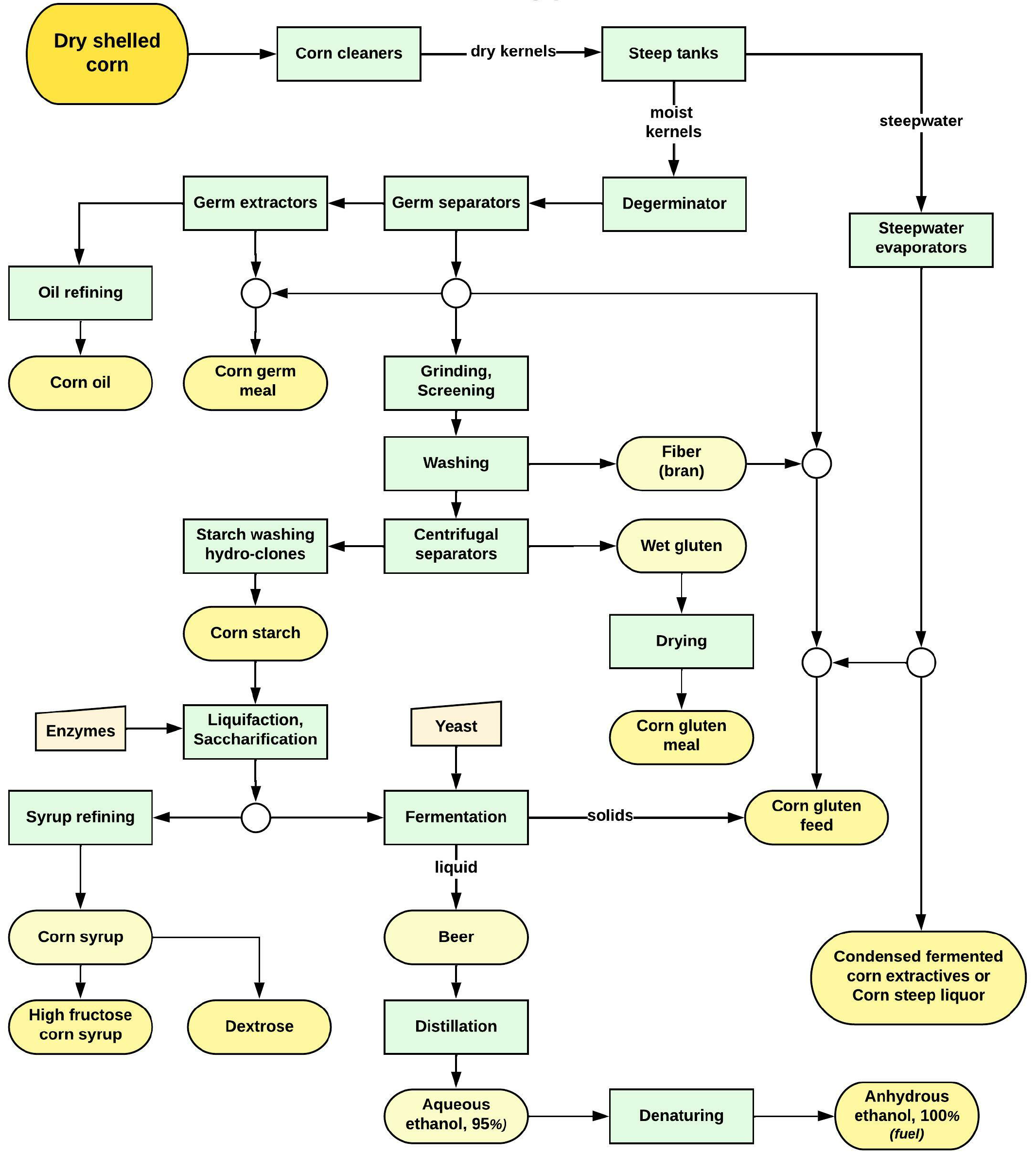⇦ Back to Livestock and Feedstuff Management Home
¶ Introduction
The primary industrial end product obtained from corn wet milling is corn starch, which is utilized for sweeteners, corn oil, and ethanol. About 66% of the corn kernel is converted into starch; and 4% ends up as corn oil.
Additional end products account for approximately 30% of the raw corn input. This includes several feed coproducts: corn gluten feed (about 24%), corn gluten meal (about 6%), corn germ meal, and condensed fermented corn extractives. These coproducts, however, are distinct from distillers grains, which are coproducts from dry grind processing.
In wet milling, the grain is soaked or "steeped" in water and dilute sulfurous acid for 24 to 48 hours to moisten the raw corn and soften the kernels. The kernel components are separated through processes including washing, screening, filtering, and centrifuging.
The steeping liquor is concentrated in an evaporator. This concentrated product, heavy steep water, is codried with the fiber component and is then sold as corn gluten feed to the livestock industry. Heavy steep water is also sold by itself as a feed ingredient. It is also a component in an alternative to salt for removing ice from roads.
The corn slurry is processed through a series of grinders after steeping to separate the corn germ. The corn oil from the germ is either extracted on-site or sold to crushers who extract the corn oil. The remaining fiber, gluten and starch components are further segregated using centrifugal, screen and hydroclonic separators.
The gluten component (protein) is filtered and dried to produce the corn gluten meal co-product.
The starch and any remaining water from the mash can then be processed in one of three ways: fermented into ethanol, dried and sold as dried or modified corn starch, or processed into corn syrup.
Dry grind processing has become the primary method for ethanol production. because of lower investment and operational requirements and improvements in fermentation technology.
¶ Figure 1. Wet Corn Milling Processing and Products (flowchart)

¶ References
http://indianaethanolproducers.org/wet_milling.html
Ani. Sci. 312, Applied Animal Science: Feedstuffs & Ration Formulation,Oregon State Univ. Extended Campus. https://courses.ecampus.oregonstate.edu/ans312/sitemap.htm
Ethanol Coproducts for Ruminant Livestock Diets. 2008. The Cattle Site. https://www.thecattlesite.com/articles/1632/ethanol-coproducts-for-ruminant-livestock-diets/
How Corn Is Processed to Produce Ethanol. Penn. State Univ. College of Earth and Mineral Sciences. https://www.e-education.psu.edu/egee439/node/6733
Bioethanol production: Feedstock and current technologies. 2013. https://www.researchgate.net/figure/Corn-wet-milling-process-flow-diagram_fig4_258514771